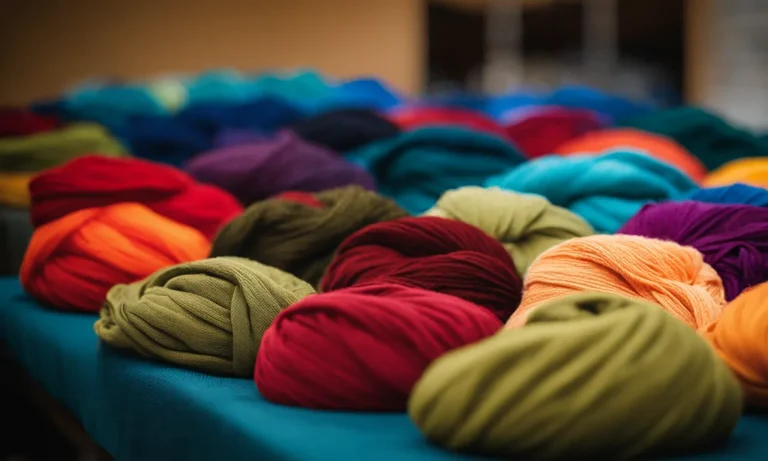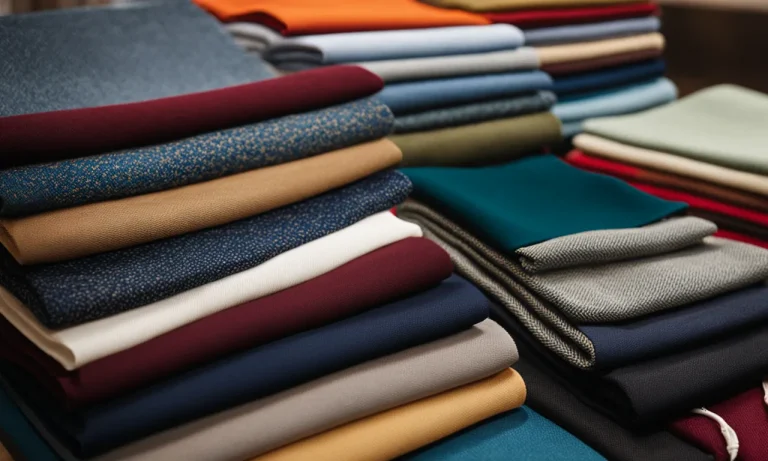Where To Put Fabric Softener In The Washing Machine
If you want your clothes to come out of the washing machine soft, fresh, and static-free, adding fabric softener is key. But when it comes to figuring out exactly where to put it, things can get a bit confusing. Should you put it in the drum? The detergent dispenser? Let’s break it down.
If you’re short on time, here’s a quick answer: For front-loading machines, add liquid fabric softener to the detergent dispenser’s softener compartment. For top-loaders, dilute softener and add it directly to the wash drum.
Keep reading for more details on loading both types of washing machines for soft, static-free laundry every time.
Front-Loading Washing Machines
Use the Dispenser Drawer
When it comes to using fabric softener in front-loading washing machines, one of the most common methods is to utilize the dispenser drawer. These machines are equipped with a compartment specifically designed for fabric softener. To use this method, simply follow these steps:
- Check the manufacturer’s instructions to locate the fabric softener compartment in the dispenser drawer.
- Pour the recommended amount of fabric softener into the designated compartment. Be sure not to overfill it.
- Close the dispenser drawer and start the washing machine as usual.
By using the dispenser drawer, the fabric softener will be released at the appropriate time during the wash cycle, ensuring that your laundry receives the full benefits of the product.
Add at the Right Time
Another option for utilizing fabric softener in front-loading washing machines is to add it at the right time during the wash cycle. This method requires a bit more attention, but it can be just as effective. Here’s how to do it:
- Start the washing machine and allow it to fill with water.
- Once the drum is partially filled with water, pause the machine.
- Add the recommended amount of fabric softener directly into the drum.
- Resume the wash cycle and let the machine complete the rest of the process.
It’s important to note that adding fabric softener directly into the drum may result in some of the product not being fully dispersed. However, if you’re looking for an alternative to using the dispenser drawer, this method can still provide satisfactory results.
For more information on how to properly use fabric softener in front-loading washing machines, you can visit reputable websites such as The Spruce or The Family Handyman.
Top-Loading Washing Machines
Dilute and Add to Drum
When it comes to using fabric softener in a top-loading washing machine, one common method is to dilute the fabric softener and add it directly to the drum. This can be done by taking the recommended amount of fabric softener and mixing it with water in a separate container.
Once it’s diluted, pour the mixture into the drum before adding your laundry. This method ensures that the fabric softener is evenly distributed throughout the load, resulting in softer and more fragrant clothes.
Consider Using Liquid vs. Sheets
When deciding between liquid fabric softener and fabric softener sheets for your top-loading washing machine, there are a few factors to consider. Both options have their advantages and it ultimately comes down to personal preference.
If you choose to use liquid fabric softener, you can add it to the drum using the dilution method mentioned earlier. Liquid fabric softener tends to provide a more consistent softness and fragrance to your clothes. It also has the added benefit of reducing static cling.
Some popular brands of liquid fabric softener include Downy and Snuggle.
On the other hand, fabric softener sheets are a convenient option for those who prefer simplicity. Simply toss a sheet into the drum with your laundry and let it work its magic. Fabric softener sheets are known for their ability to reduce static cling and leave clothes smelling fresh.
Popular brands like Bounce and Gain offer a variety of scents to choose from.
Ultimately, whether you choose to dilute and add liquid fabric softener or use fabric softener sheets, both methods can effectively soften and freshen your laundry in a top-loading washing machine. It’s all about finding what works best for you and your washing routine.
How Fabric Softener Works
Fabric softener is a popular laundry product that provides numerous benefits to your clothes. Understanding how fabric softener works can help you get the most out of this product and keep your clothes feeling and smelling amazing.
Coats Fabrics
One of the primary functions of fabric softener is to coat the fibers of your clothes. When added to the washing machine, the softener forms a thin layer on the fabric, which helps to reduce friction between the fibers.
This coating makes your clothes feel smoother and more comfortable against your skin. It also helps to prevent tangling and wrinkling, making your clothes easier to iron.
Prevents Static
Static electricity can be a real nuisance, causing your clothes to cling together and stick to your body. Fabric softener contains ingredients that help to neutralize static charges, preventing clothes from sticking together.
By using fabric softener, you can say goodbye to those embarrassing moments when your skirt or shirt sticks to your legs or torso.
Leaves Clothes Soft
Fabric softener works by adding a layer of lubrication to your clothes, which helps to maintain their softness. It contains emollients that penetrate the fabric fibers, making them feel softer to the touch.
This is particularly beneficial for fabrics like towels and bed sheets, which can become rough and stiff over time. Additionally, fabric softener leaves a pleasant fragrance on your clothes, giving them a fresh and clean scent.
It’s important to note that fabric softener should be used correctly to achieve optimal results. Always follow the instructions on the product packaging and be mindful of the recommended dosage for your specific load size.
By understanding how fabric softener works and using it correctly, you can keep your clothes looking and feeling great after every wash.
Tips for Maximizing Softness
Use Warm Water
One of the simplest ways to maximize softness when doing laundry is to use warm water instead of cold water. Warm water helps to dissolve the detergent and fabric softener more effectively, allowing them to penetrate the fibers of the fabric. This results in softer and more comfortable clothes.
Additionally, warm water can help to remove any residue or build-up that may be present in the fabric, further enhancing the softness.
Add Vinegar
Vinegar is a natural and cost-effective fabric softener alternative. It helps to break down any residue or build-up in the fabric, making it softer and more comfortable to wear. To use vinegar as a fabric softener, simply add half a cup of vinegar to the fabric softener dispenser or during the rinse cycle.
The vinegar will not only soften the fabric but also help to eliminate any lingering odors. It’s a great option for those with sensitive skin or allergies as it is gentle and chemical-free.
Line Dry
While many people rely on the convenience of a dryer, line drying your clothes can actually help to maximize their softness. When clothes are hung up to dry, the weight of the fabric pulls it downward, stretching the fibers.
This stretching action helps to relax the fabric, making it softer to the touch. Additionally, line drying allows the clothes to absorb the natural moisture in the air, leaving them feeling fresh and soft.
So, if you have the space and time, consider line drying your clothes for that extra touch of softness.
Conclusion
Getting soft, static-free laundry is easy when you know where to add fabric softener. For front-loaders, use the dispenser. For top-loaders, dilute and add directly to the drum. Follow any other care instructions, like water temperature and drying method, and your clothes will come out soft, fresh, and static-free every time.







